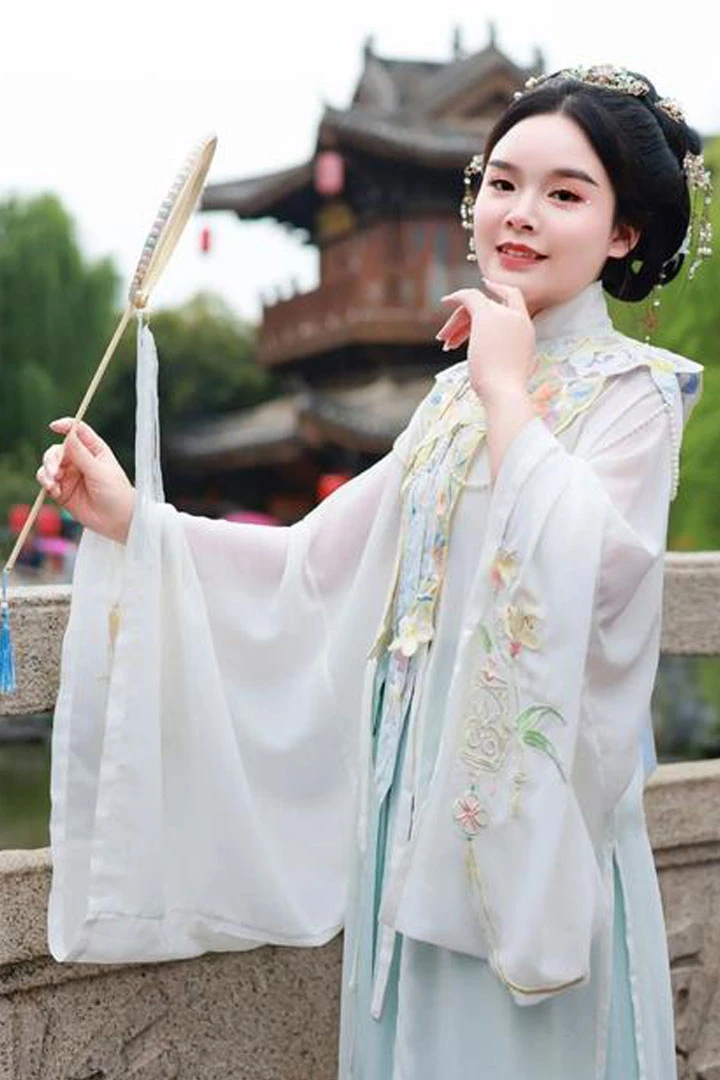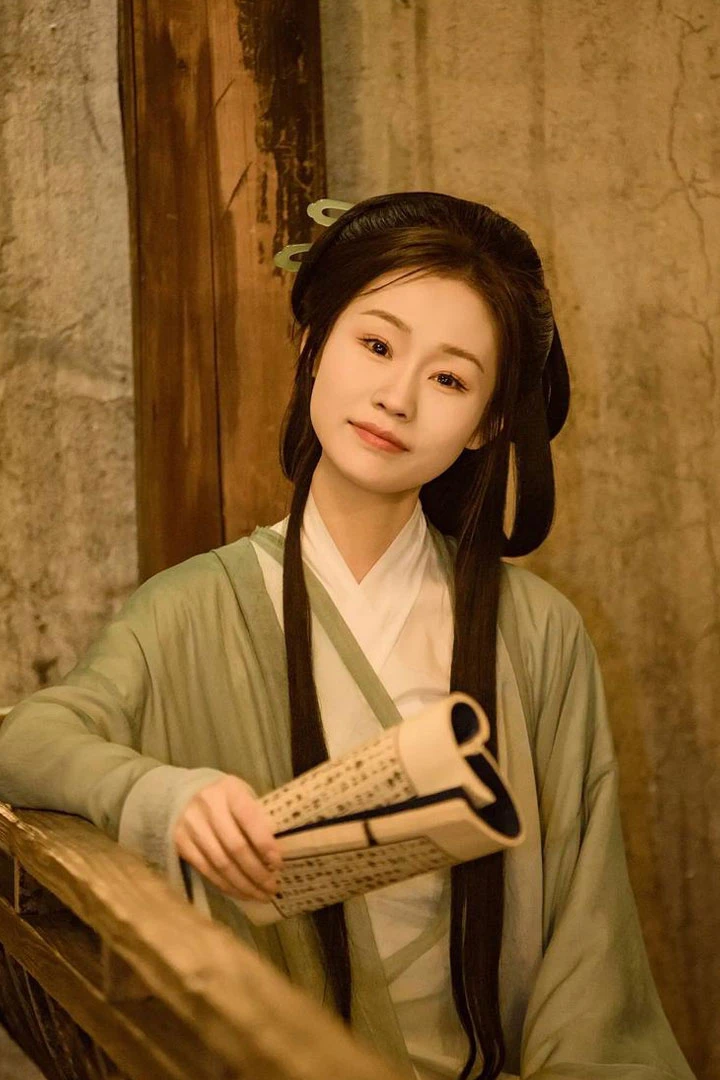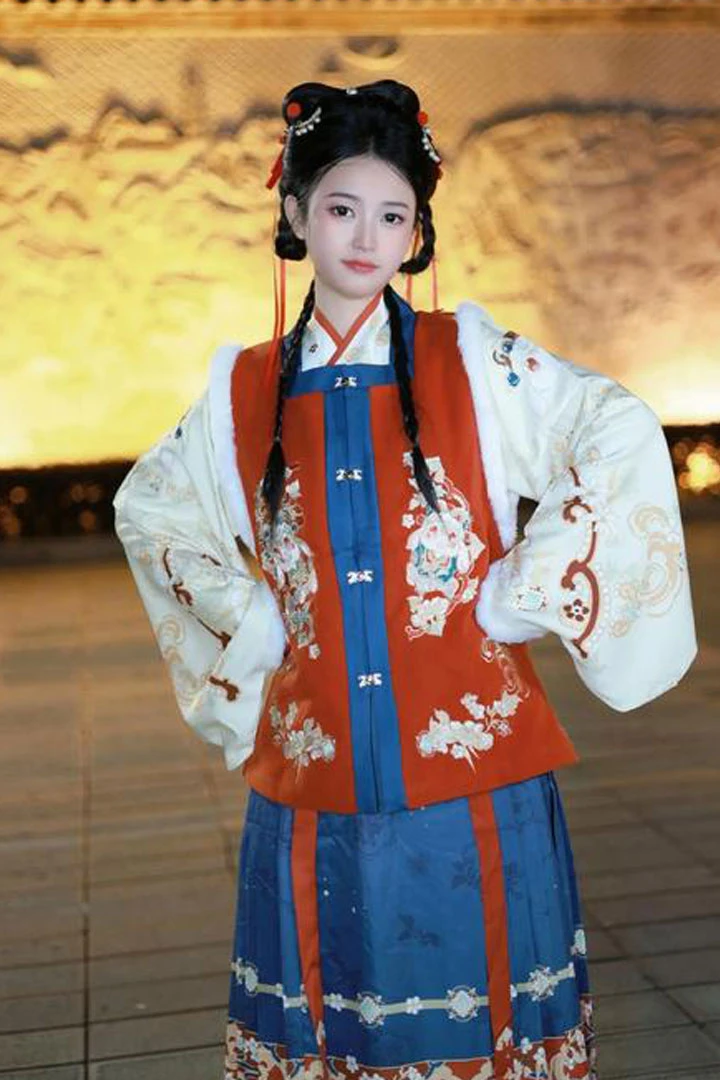In recent years, the popularity of Hanfu has surged across China, particularly evident during events like the Jinhu Hanfu Cultural Consumption Season. People flock to ancient capitals like Hedou, clad in exquisite Hanfu attire, to indulge in traditional foods, capture memorable moments against iconic landmarks, and eagerly share their experiences on social media. Hanfu has become more than just a garment; it's a cultural statement, often eclipsing even the weather in conversations.
The Evolution of Hanfu: From Tradition to Trend
Hanfu, by definition, refers to traditional Chinese attire that dates back to ancient times. As Professor Huang Qiang, a renowned expert in clothing history, explains, references to Hanfu can be found in ancient texts dating back to the times of the Yellow Emperor and Yao-Shun era. Each dynasty in Chinese history contributed unique styles to Hanfu, reflecting the era's aesthetic and social norms.
From the deep-collared "Shenyi" of the Qin and Han dynasties, which symbolized modesty and hierarchy, to the flowing "Baoyi" robes of the Wei and Jin periods, which exuded elegance and freedom, Hanfu evolved alongside China's rich history. The Tang dynasty introduced a color-coded system where the hue of one's attire indicated social status—a system vividly captured in Bai Juyi's poetry lamenting the tears staining the green robes of a lowly official.

The Modern Hanfu Renaissance
However, the Hanfu worn today differs significantly from its historical predecessors. Modern Hanfu, often labeled as "imitation traditional clothing" by experts like Professor Huang Qiang, blends traditional elements with contemporary influences. It lacks the precise historical accuracy of its predecessors and is more of a reinterpretation guided by modern sensibilities.
According to Professor Huang, distinguishing between authentic historical attire and modern replicas can be challenging. Many modern Hanfu designs lack clear historical markers, such as specific dynastic influences or social hierarchies, and are tailored more for aesthetic appeal than cultural fidelity. This shift raises questions about the authenticity and educational value of modern Hanfu as a cultural artifact.
Guo Zaiquan, founder of Qifengge Hanfu, notes a significant shift in Hanfu's popularity over the past two decades. What started as a niche interest has blossomed into a mainstream cultural phenomenon, with sales skyrocketing annually. Hanfu's appeal extends beyond mere fashion; it embodies a cultural revival driven by national pride and historical nostalgia.
Guo observes regional preferences in Hanfu sales, with Southern styles from the Song and Ming dynasties proving more popular among buyers. This regional variation underscores Hanfu's adaptability and enduring allure across different demographics within China.
Despite its growing popularity, the modern Hanfu movement faces challenges, particularly concerning authenticity and cultural representation. As Hanfu becomes more commercialized, there's a risk of diluting its historical and cultural significance for the sake of market trends and consumer appeal. Balancing preservation with commercialization is crucial to ensuring Hanfu retains its educational and cultural value.
The Future of Hanfu: Bridging Tradition and Modernity
Looking ahead, the future of Hanfu appears promising yet uncertain. As China continues to assert its cultural identity on the global stage, Hanfu serves as a powerful symbol of the nation's rich cultural heritage and artistic achievements. Its evolution—from ancient attire to contemporary fashion statement—reflects broader societal shifts towards cultural revival and appreciation.
This resurgence underscores the importance of balancing tradition with innovation, ensuring that Hanfu remains a vibrant and meaningful expression of China's cultural legacy for generations to come.
Preserving Cultural Integrity Amidst Commercialization
As Hanfu gains mainstream popularity, concerns about its commercialization and authenticity become increasingly pertinent. Modern interpretations of Hanfu often prioritize aesthetic appeal over historical accuracy, leading to a diluted understanding of its cultural significance. While this adaptation has introduced Hanfu to a wider audience, it has also sparked debates among scholars and enthusiasts about the fidelity of these representations.
Scholars like Professor Huang Qiang emphasize the importance of educational initiatives to promote a deeper understanding of Hanfu's historical context. Public events and exhibitions that accurately depict historical attire can play a crucial role in bridging the gap between modern interpretations and authentic historical garments. Such initiatives not only educate the public but also foster a sense of cultural pride and heritage appreciation.
Moreover, the commercial success of Hanfu has led to a burgeoning industry that encompasses design, production, and retail. Entrepreneurs like Guo Zaiquan have capitalized on Hanfu's popularity by establishing cultural centers and online platforms dedicated to promoting traditional attire. These efforts not only stimulate economic growth but also contribute to the preservation and dissemination of Hanfu culture.
However, with commercialization comes challenges of cultural appropriation and misrepresentation. The mass production of Hanfu-inspired clothing by non-Chinese manufacturers, often without proper acknowledgment of its cultural origins, raises ethical concerns. It underscores the need for cultural sensitivity and respect for intellectual property rights in the global fashion industry.
Furthermore, Hanfu's revival has sparked interest beyond China's borders, attracting enthusiasts and scholars worldwide. International interest in Hanfu workshops, academic conferences, and exhibitions underscores its potential as a global cultural phenomenon. This cross-cultural exchange not only promotes cultural diversity but also enriches global understanding of traditional Chinese attire.
Sustaining Hanfu's cultural integrity requires a balanced approach that embraces innovation while safeguarding authenticity. Collaborations between historians, designers, and educators can ensure that modern Hanfu designs are rooted in historical accuracy and cultural significance. Additionally, fostering a community of informed consumers who appreciate Hanfu beyond its aesthetic appeal is crucial for its long-term preservation.
In conclusion, Hanfu's resurgence represents more than a fashion trend; it symbolizes a cultural revival driven by historical pride and artistic expression. As China continues to assert its cultural identity on the world stage, Hanfu serves as a powerful emblem of the nation's enduring legacy and global influence. By navigating the complexities of commercialization and globalization with cultural sensitivity, Hanfu can transcend borders and generations, ensuring its place as a cherished cultural heritage for years to come.



